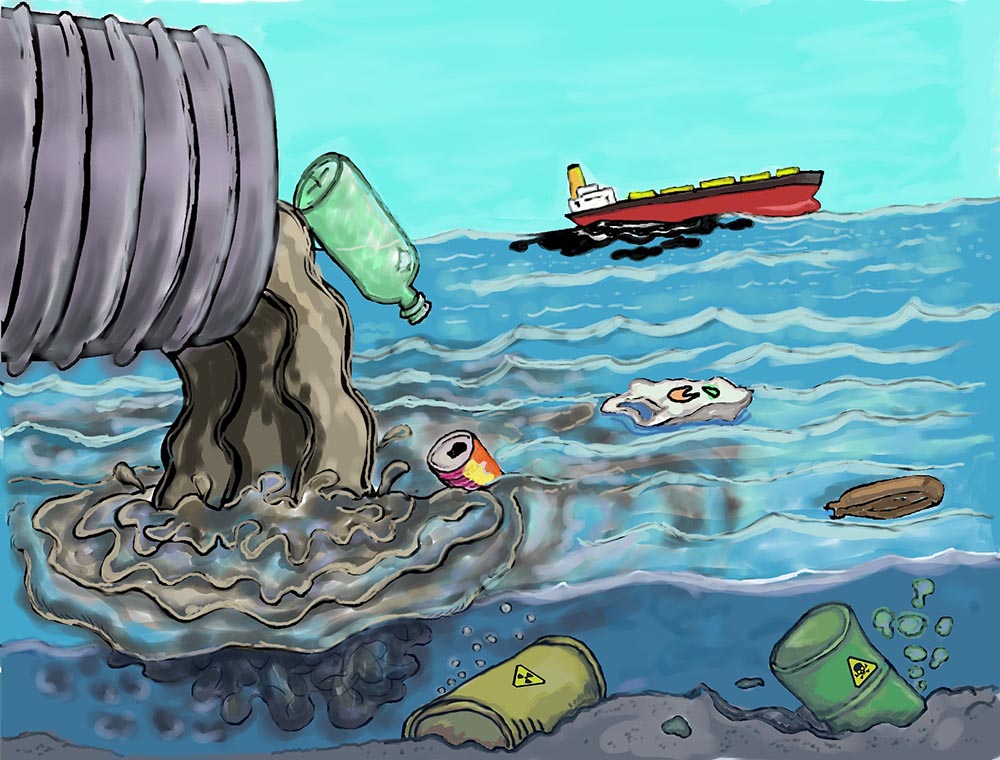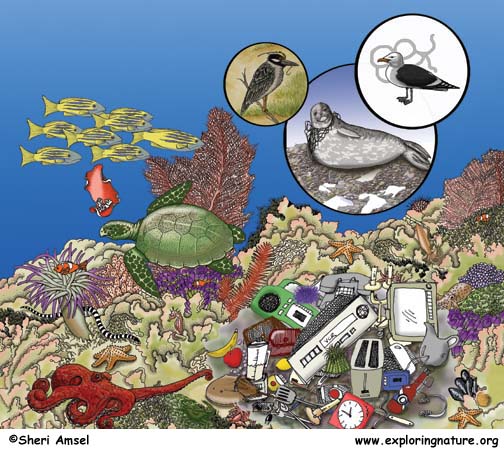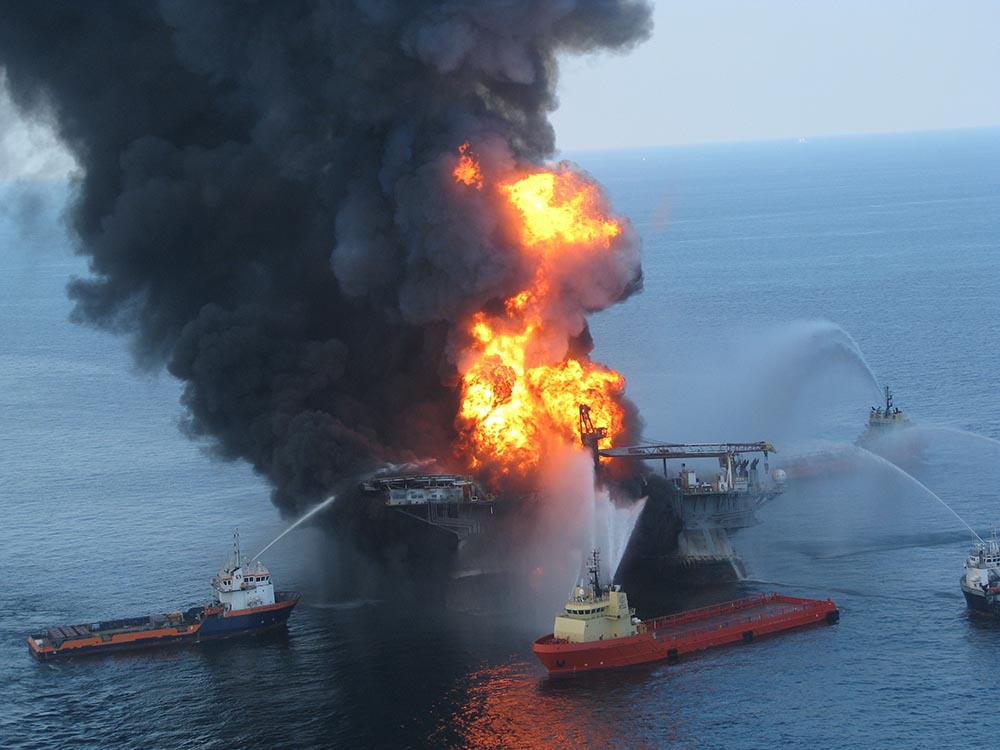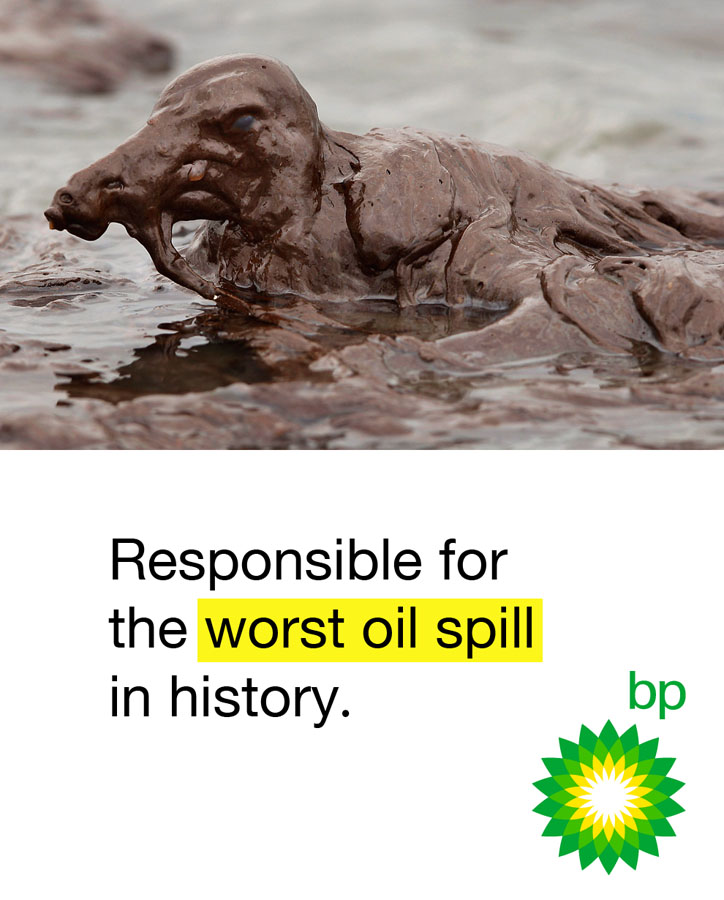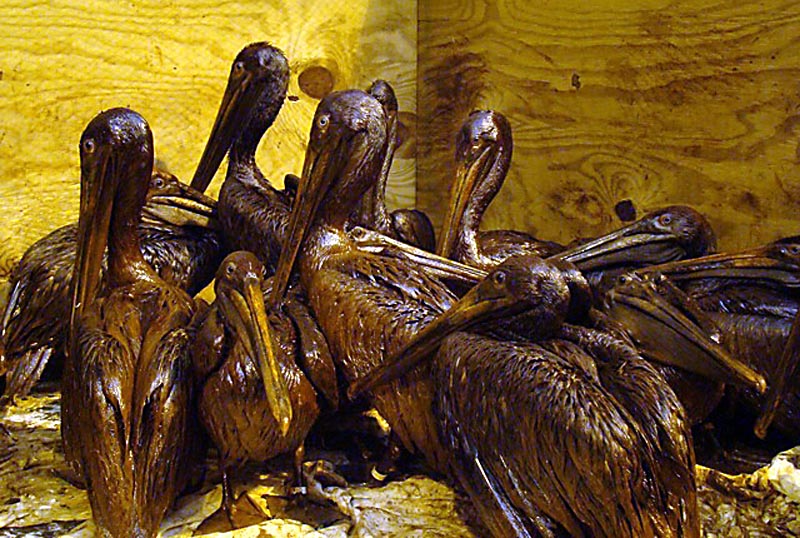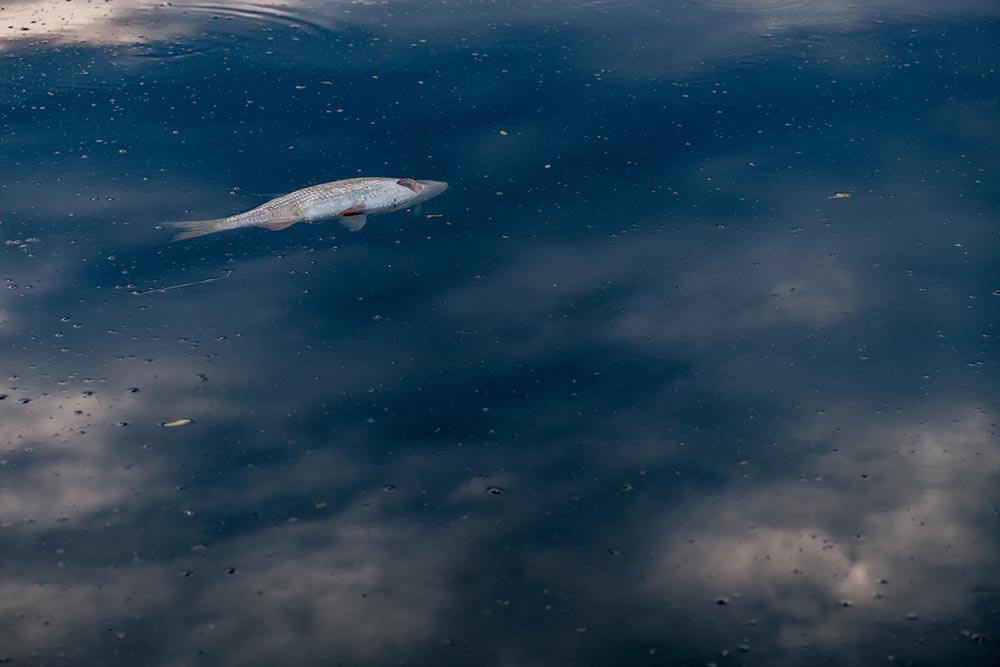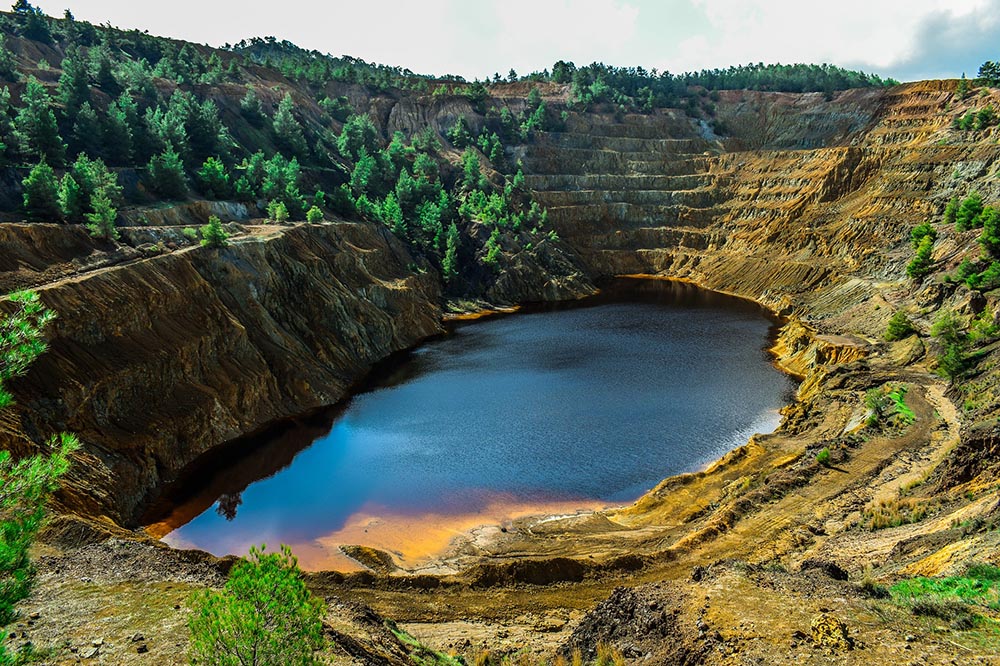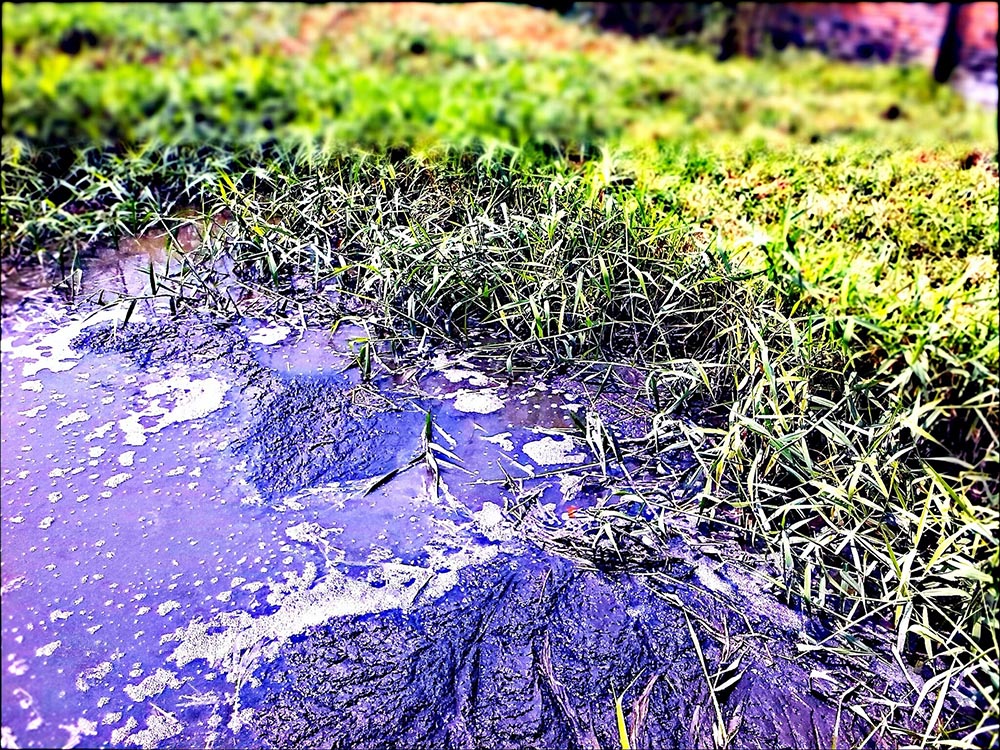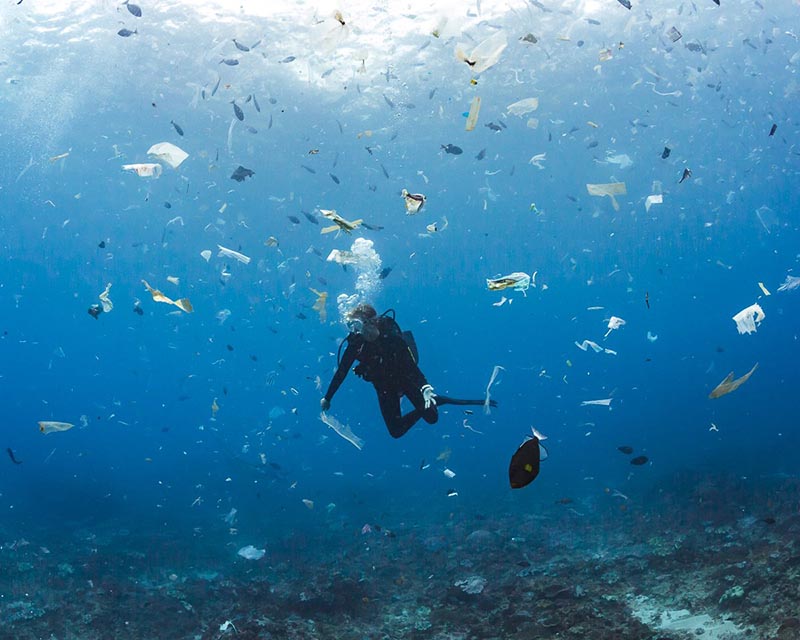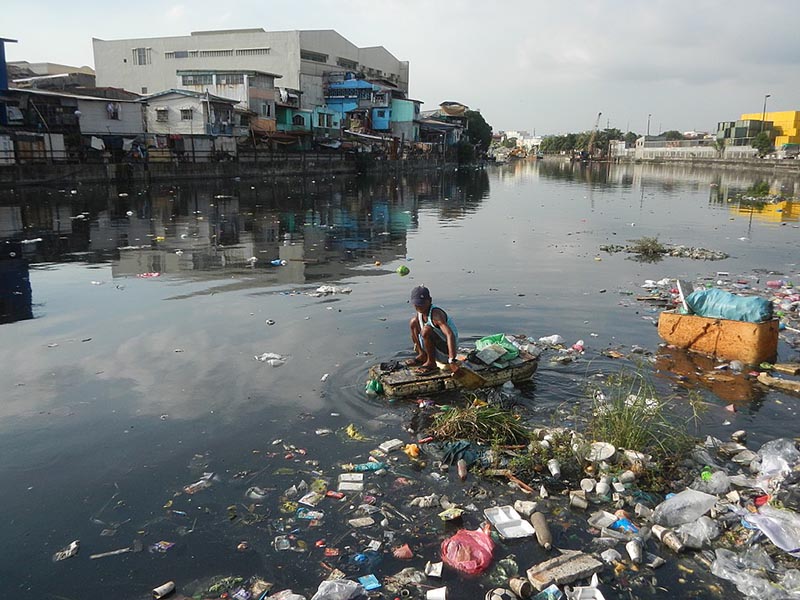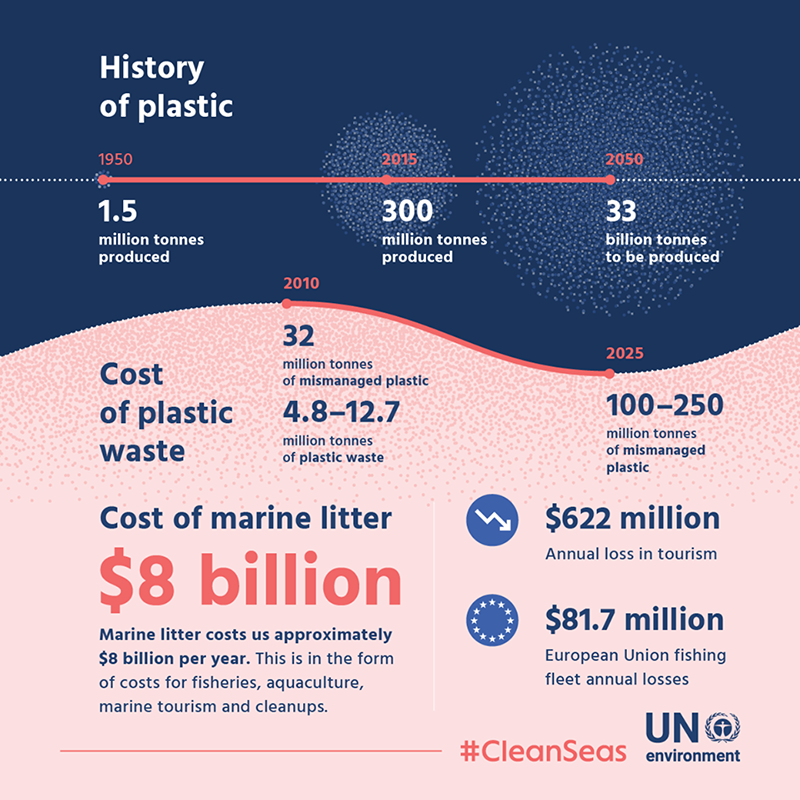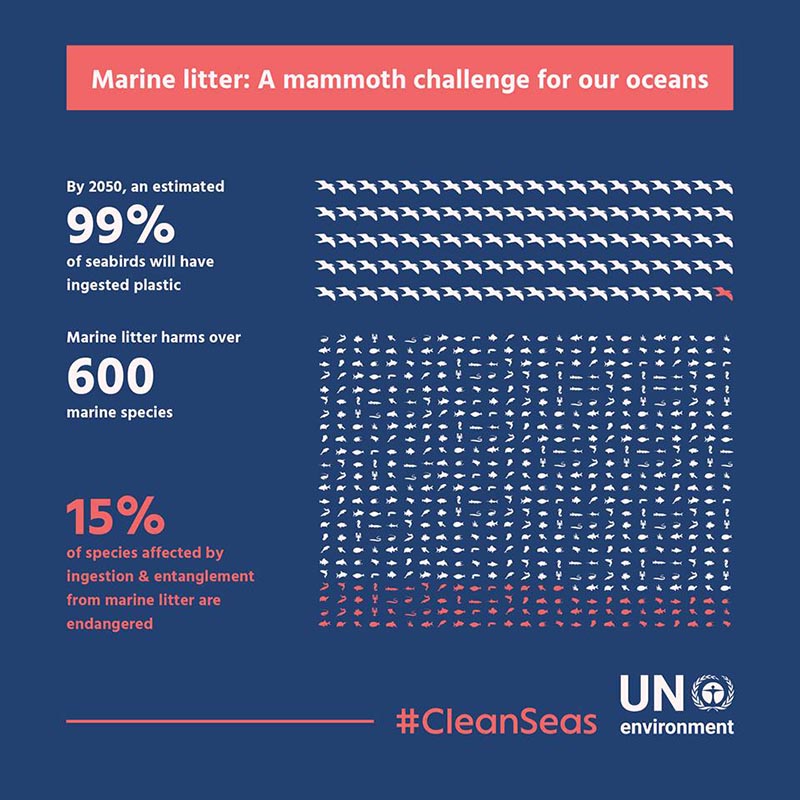What Is Ocean Pollution?
70% of the Earth is covered in water.
Until a few years ago, scientists and governments believed that, since the oceans are so large, anything dumped into them would just disappear, without causing any harm.
Unfortunately, this is not true. Many materials that are being made by humans are ending up in the oceans, dirtying, or polluting, them. 90% of living things live in the oceans, so any pollution, in fact, affects an immense number of living things.
There are three main types of ocean pollution:
1
Oil Pollution
2
Agricultural Chemicals
3
Garbage (mostly Plastic)
Ocean Pollution – Causes and Effects
1. Oil Pollution
Over 35% of oil pollution in the ocean comes from land. Oil that drips from cars onto the road, and waste oil from factories, is washed away by the rain and eventually ends up in the ocean.
However, most oil pollution comes from accidents in the ocean. Leaks from oil tankers, offshore oil wells, or oil pipelines in the sea can cause oil spills that are difficult to clean up. The largest oil disaster at sea was the BP oil spill of April 2010. About 4.9 million barrels of oil were spewed into the Gulf of Mexico.
Floating oil blocks out sunlight and prevents oxygen from dissolving in the water. Animals can get very sick if they swallow the oil, and they also suffocate if the oil gets in their air passageways. Animals can get stuck in the oil and die because they are unable to escape, and any oil coating the sea birds’ feathers and otters’ fur prevents their fur or feathers from protecting their skin and keeping them warm.
2. Chemical Pollution
One of the sources of chemical pollution is sewage, or drainage. This can come from ships dumping untreated sewage into the ocean. However, most of it comes from land, and is mostly untreated drainage from toilets, bathing, laundry, dishwashing and garbage disposal.
Chemicals from factories, and pesticides and fertilizer used in farms also pollute our oceans. Rain washes them away and carries them towards the sea.
Sewage is very dangerous because it carries harmful bacteria and can spread diseases through the water. The chemicals from pesticides and fertilizers kill marine life and damage coral reefs. In some areas there is so much fertilizer pollution that ‘dead zones’ have been created. The fertilizer causes algae to grow fast. These simple plants use up a lot of oxygen, killing aquatic plants and animals because they are unable to survive without oxygen.
When massive numbers of fish die at once because of pollution, it is called a fish kill.
3. Garbage Pollution
Garbage can easily end up in the ocean. Boats that are transporting garbage can lose some over the side, but the majority of garbage comes from land. Garbage can be blown by wind or washed away by the rain, eventually ending up in the sea. The worst type of garbage affecting the ocean is plastic.
Everybody uses plastic and buys things that either contain or come in plastic. Plastic is lightweight, cheap, durable, and can be used in all weather. The problem is that, many times, people use plastic once and throw it away immediately. Some examples of disposable plastic are wrappers, bottles, cups, cutlery, plates, straws, and bags.
In all the oceans there is a lot of plastic, sunken or floating on the surface. Up to 20 million tonnes of plastic ends up in the oceans every year. Plastic takes a very long time to decompose, so it keeps accumulating, and is easily carried with ocean currents. In the Pacific Ocean a lot of plastic has gathered into what is now called the Great Pacific Garbage Patch.
“Up to 80% of all litter in our oceans is made of plastic. At the rate at which we are dumping items such as plastic bottles, bags, cups and straws after a single use, by 2050 we will have more plastics in the oceans than fish.”
How Plastic Affects Marine Life
Every year, more than 100 million marine animals are killed by plastic. More than 700 marine species are affected, from tiny corals to huge whales. They are usually killed either by eating the plastic or getting tangled in it.
- Animals can get tangled in plastic. This can cut through the skin, causing infections that can lead to death.
- Birds that get tangled in plastic may drown or starve because they would not be able to find food and water.
- Marine mammals and reptiles that get tangled in plastic might become exhausted. They might drown or be unable to surface to breathe.
- Animals can starve to death by eating plastic. The plastic remains in the stomach, makes them feel full, and stops them from eating.
- When birds eat plastic, this can get stuck in their throats. This can cause them to suffocate or prevent them from feeding their chicks.
Why Do Animals Eat Plastic?
Animals are unable to tell the difference between food and plastic. If it looks like, smells like, tastes like, or behaves like food, then it must be food.
- Some animals feed by opening their mouth and taking in whatever happens to be there. This is called filter feeding. It is very easy for these animals to swallow plastic by accident.
- Some chemicals in plastic can make it smell like food.
- Certain animals such as turtles can mistake plastic bags for jellyfish.
- Plastic can break up into small pieces, sometimes resembling eggs. These are often eaten by filter feeders and egg-eating fish.
- Seabirds, such as albatrosses, that fly over the sea to eat, often mistake plastic pieces for food.
- Animals that use sonar to hunt can confuse plastic for their food.
- Seabirds can mistake floating small pieces of plastic for fish they eat.
- Red, pink and brown pieces of plastic look like shrimp.
The Death Toll
Coral
- Algae living on coral that use photosynthesis die because plastic covering them blocks out the sun.
- Microplastics (very tiny pieces of plastic) block the digestive systems of coral, starving many species of coral.
Birds
- Millions of birds are killed each year by plastic.
- 56% of all seabird species are affected.
- 98% of albatrosses have eaten plastic.
- 40% of albatross chicks died when their parents fed them plastic.
Fish
- 114 species of marine fish regularly eat or get tangled in plastic.
- At least a million fish are killed this way each year.
Sea Turtles
- All seven species of endangered sea turtles eat or get tangled in plastic.
- More than 50% of sea turtles eat plastic
- 50-80% of all dead sea turtles found have plastic inside them.
Marine Mammals
Plastic affects 54% of all whales, dolphins and seals. About 100,000 marine mammals are killed by plastic each year. Some examples:
- 2018, Thailand – Pilot whale killed by 80 plastic shopping bags.
- 2018, Spain – Sperm whale dead with 30kg of plastic in its gut.
- 2017, Norway – Goose-beaked whale had to be killed after eating 30 plastic shopping bags.
- 2016, Germany – Four Sperm whales with car parts, a 13-metre long net and a bucket found in their stomachs.
- 2013, Netherlands – Whale found dead after eating 17kg of plastic.
- 2011, Puerto Rico – Gervais’ beaked whale found with 17kg of plastic in its stomach.
- 2008, California, USA – Whale found with more than 200kg of fishing gear and plastic bags in its stomach.
- 2008, Malaysia – Bryde’s whale killed by a nylon rope, a plastic bag and a bottle cap.
- 2006, Greece – Sperm whale found dead with 100 plastic shopping bags in its stomach.
- 2006, Cook Islands – Cuvier’s beaked whale killed by a single plastic shopping bag.
- 2002, France – Minke whale killed by just 800g of plastic bags.
- 2000, Australia – Bryde’s whale found dead with 6m2 of plastic bags in its stomach.
- 1989, France – Sperm whale killed after eating 30 metres of plastic sheeting. One of the first whales documented to have been killed by plastic.
What Can We Do?
Farming
- Using natural alternatives to pesticides, as in organic farming, reduces the chemicals that end up in the ocean.
- Crop rotation can help reduce the need for fertilizers.
Oil
- Making sure that tankers (big ships carrying oil) are checked regularly to prevent spills.
- Making sure that oil platforms enforce safety rules.
Sewage
- Filtering water from sewage, even from factories and farming.
- Avoid throwing harmful chemicals down the drain.
Laws
- Many laws have been made by governments around the world regarding ocean pollution prevention.
- One example is the EU directive of December 2018 to ban several single-use plastic items.
Individually
- REDUCE waste. Try to avoid buying single-use items or products that come in too much packaging.
- RE-USE – Use things more than once before throwing them away.
- RECYCLE – Throw away things in the right bin so that they can be recycled.
- Take part in cleanup activities, maybe even as a school.
- Choose to buy products that are safe for the environment.
- Choose to buy products from companies that do not cause harm to the environment while making the products.
